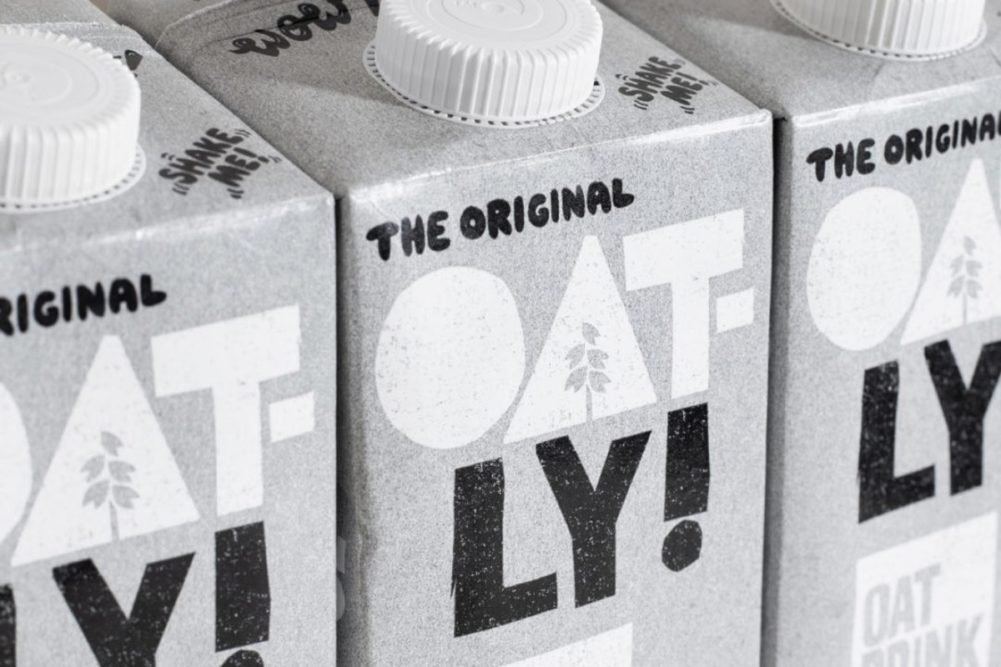MALMO, SWEDEN — Efforts to improve the performance of Oatly Group AB ran into trouble during the second quarter of fiscal 2023 in Asia and the Americas. The issues were significant enough to suppress quarterly results and prompt management to reduce the company’s revenue outlook for the full year.
For the quarter ended June 30, Oatly recorded a loss of $86.7 million, greater than the loss of $71.9 million reported during the same period of the year before.
Quarterly sales reached $196 million, up from $178 million the year prior. Price/mix contributed 8% to the sales growth during the quarter while volume grew 3%.
As Asian markets have transitioned to a post-pandemic era, consumers in the region have behaved differently, said Jean-Christophe Flatin, chief executive officer. As a result, the company must adjust.
In preparation for Asian markets reopening, Oatly invested in product innovation, distribution, in-store promotions, sampling and advertising.
“This expected tailwind has not materialized as we expected,” Flatin said during a July 27 conference call to discuss second-quarter results. “So we need to adjust to the current reality of how consumers are behaving, and we need to improve the fundamentals of our business before we’re able to meaningfully accelerate growth. We cannot continue to distract ourselves, and we cannot continue to justify these significant investments with uncertain payoffs. This is why we have initiated the strategic reset plan for Asia.”
For the quarter ended June 30, Oatly’s Asia region sales fell 15% to $37.2 million from $43.7 million the year before.
As a result, the company plans to focus on expanding in core businesses and with core stock-keeping units (SKUs) as well as reduced operating costs.
“Nearly 60% of our revenue in Asia is in foodservice and we believe we have a strong position in that channel,” said Daniel Ordonez, chief operating officer. “Our foodservice business is fairly geographically concentrated, and we believe that retail expansion in those markets makes the most sense since the local consumers already know us.
“We will also be changing the team's innovation process. Historically, we had a process that resulted in testing and piloting a multitude of new products at the same time, many of which were very expensive to produce and distribute, especially in the retail and e-commerce channels. We will be, therefore, slowing down on SKU expansion and eliminating many unnecessary SKUs.”
The company said it may take an impairment charge against its Asia business later in the year.
In the Americas, Oatly sales increased 19% to $61.8 million from $51.8 million the year before. The increase primarily was due to price increases, according to the company.
Despite the sales growth, Ordonez said the company’s strategy is working at a slower pace than anticipated.
“We have not taken our foot off the gas and our team is aggressively pursuing additional commercial opportunities across all channels,” he said.
To adjust to the slower-than-expected pace of business development, Oatly is reducing overhead costs in the region, according to the company.
One region performing well for Oatly is Europe, the Middle East and Africa (EMEA), where quarterly sales rose 18% to $97 million from $82.5 million the year before. Price increases and volume growth in oat drinks supported the sales growth, according to the company.
Flatin said during the third quarter of fiscal 2022 Oatly initiated a strategic plan in EMEA that led to improved market share and revenue growth in the region.
“We have now expanded this approach to our Americas business, where we have stabilized and strengthened the supply chain, increased demand driving investments and steadily improved adjusted EBITDA,” he said. “While we are not yet all the way to where we want to be, the consistent improvement is clear.
“Finally, we are expanding this approach to our Asia business. We have (a) long-term conviction of the opportunity in Asia and taking these actions will help us capture the opportunity.”
Oatly reduced its fiscal 2023 sales outlook from a range of 23% to 28% growth to a range of 7% to 12%. In fiscal 2022, Oatly’s sales were $722.2 million.
“Approximately two-thirds of the reduction is driven by the Asia segment with the remainder being driven by a more conservative outlook for the Americas,” Flatin said.
For the first six months of fiscal 2023, Oatly incurred a loss of $162.3 million, slightly greater than the same period during fiscal 2022 when the company reported a loss of $159.5 million.
Sales for the period were $391.6 million, up from $344.1 million.

